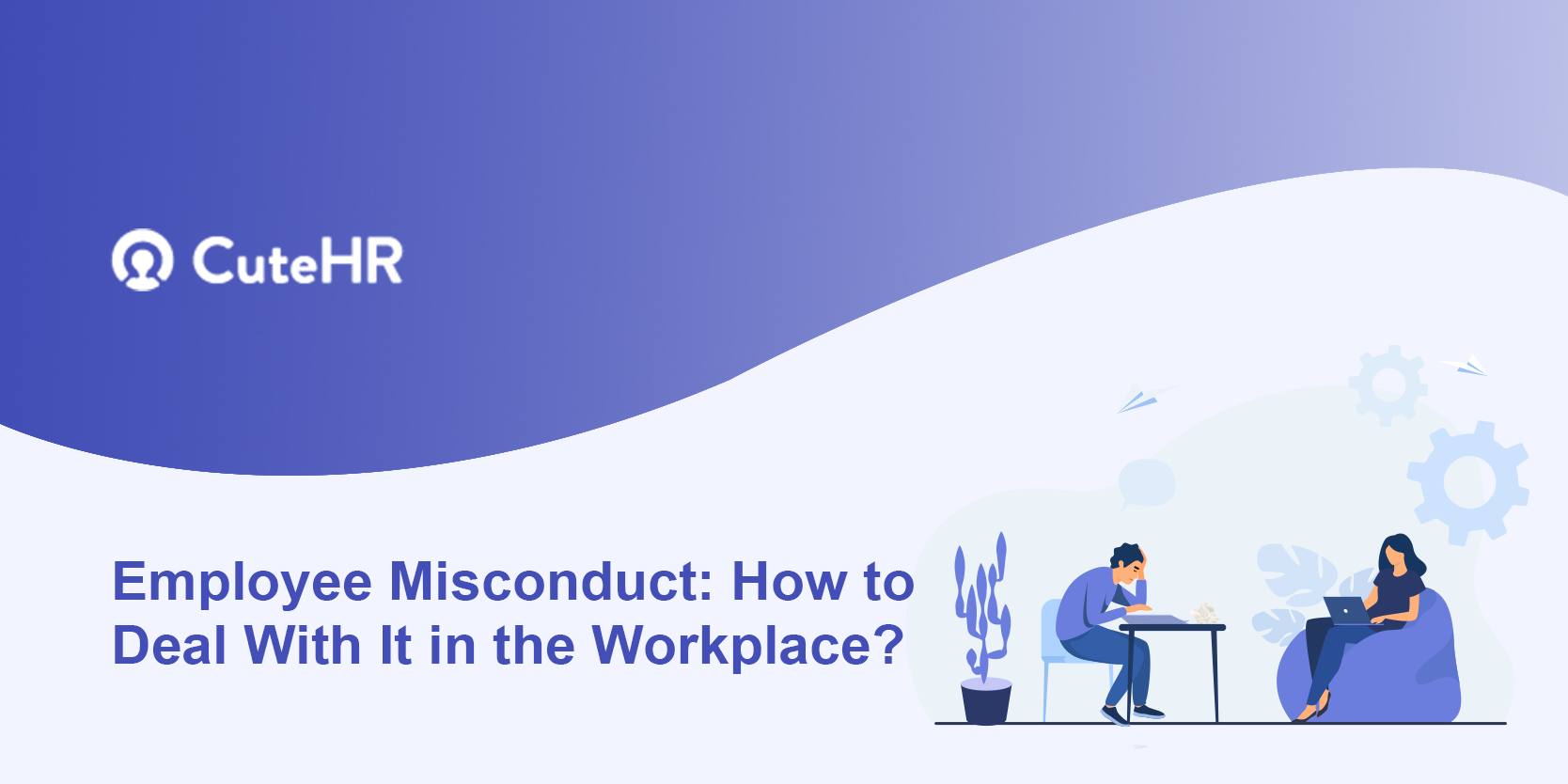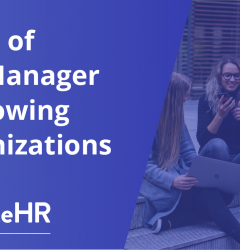23 Aug

Did you know? Over 75% of U.S. office workers have experienced or witnessed employee misconduct at some point in their careers.
Employee misconduct is the devil in the corporate world, and it can raise its ugly head in any workplace, at any moment. You never know until something happens.
Employee misconduct is a wide term that covers poor employee behavior. Every workplace has examples of misconduct, although the type of these examples varies widely. With so many reports of employee misconduct, blindly trusting your staff can lead to problems.
Employers must be on the lookout for all forms of employee misconduct in order to keep their business on track and avoid more misconduct.
Employee misconduct is a severe problem that frequently leads to immediate termination. It can have several harmful implications on a company, such as reduced employee morale and productivity, increased turnover rates, increased liability exposure, judgments, fines, or other penalties for breaking the law that governs employee conduct, and other adverse consequences.
We’ll look at the many types of employee misconduct in this blog, along with some practical tips for dealing with it at work. Along with advice on how to improve your existing disciplinary actions, you’ll also discover when to dismiss an employee. Learn how to defend your organization against wrongful termination claims and what actions you can take in the case that an employee conducts misconduct.
Table of Contents
Employee Misconduct Definition
Employee misconduct can be defined simply as an intentional disrespect for organizational policies and standards. A worker misbehaves or makes a poor choice. Any faith the employer may have in the employee is put at risk by this misbehavior. Employee misconduct is the complete disregard of an apparent or implied employee policy.
This misconduct may result in simple verbal and written disciplinary action, suspension, and employment termination, among several other unavoidable consequences (and possible legal action depending on the severity).
This type of situation is something that no company wants to deal with, yet it occurs far more commonly as a result of allowing employees to drift away from their organization over time.
Types of Employee Misconduct
Employee misconduct is classified into two types: general and gross. One is less serious than the other, yet both require supervisors to take action when unpleasant employee conduct arises.
1. Employee misconduct of a general nature (simple)
The first category of misconduct, general (or simple) employee misconduct, includes activity that has no intention of causing harm to either individuals or the organization. You don’t have to fire an employee right away.
However, it does imply that the employee’s supervisor and HR must document and carry out any disciplinary action required to fix the situation.
An employee who is frequently late to work or who has made an offensive comment to a coworker is an example of general employee misconduct. Their actions are unpleasant, yet they are not intended to harm the organization.
These are offenses, but they are easily fixable and do not need immediate termination. For first-time violations, a written warning for employee misconduct and duration of monitoring may be all that is required. Or it may require more extreme action, such as suspension.
2. Gross employee misconduct
In the scenario of gross employee misconduct, an employee has acted in such a way that instant termination is necessary. The legal word is “summarily dismissed.” This is unacceptable behavior that is intended to hurt the company and other coworkers.
Generally, the employee’s behaviors are adequate to force the employer to terminate their job and immediately escort them off-premises. If the offense is severe, this includes the first offense. Employees may be terminated without warning, and their final payment may be withheld if the organization experiences financial or property damage.
Employee misconduct can occur both in a physical location and virtually on a remote team. One employee who leaves their camera and microphone on while abusing the organization’s CEO during virtual team meetings is an example of this. Or an employee who sends an inappropriate group email,
Consider if a person is knowingly violating the conditions of their employment by doing a second job for rival organizations or running a business that directly competes with their primary employer.
Employee Misconduct Examples
Employee misconduct occurs in many forms, as mentioned above. However, the most common employee misconduct examples are as follows:
1. Violence
Employee misconduct, including violence, is a common issue in the workplace. The level to which they occur varies. Some organizations have employees who have no issues with violence, whereas others do.
It is one of the primary reasons firms have specific standards regarding how workers should conduct themselves at work and that there is zero tolerance for this sort of behavior. In situations of violence, immediate termination is usually the conclusion.
Violence is defined as the threat of physical contact with the intent to hurt another person. It might vary from violent threats or aggressive pushing and shoving to severe bodily harm caused by an employee’s violent behavior.
Among the most common forms of workplace violence are bullying, stalking, assaults with lethal weapons, threats against coworkers, executives, or customers, and sexual harassment.
It is illegal to carry a weapon or dangerous equipment in any location that offers public services, including hospitals, airports, parking garages, schools, and office buildings.
2. Involvement in drug and alcohol use
Employees may be expected to do their duties with a certain level of proficiency and safety, which might necessitate their continuous sobriety. Accidents can occur when an employee is under the influence of drugs or alcohol on the job.
In the event of media participation, this form of misconduct can potentially portray a significant danger to the company’s reputation. When an employee consumes drugs during working hours, the HR department must take disciplinary action or send written warnings.
3. Fraud and Theft
Theft and fraud are two of the most serious forms of gross misconduct that an employee in any organization can commit. If it becomes public, it is illegal, unethical, and extremely disastrous to a company’s reputation. It can result in the loss of targeted customers as well as legal and financial problems.
Embezzlement, credit card theft, tax evasion, and voter or insurance fraud are all examples of fraud. Other types of theft and fraud include stealing items, utilizing business resources for personal benefit, stealing from coworkers, and so on.
4. Harassment
Employee harassment can include many types of verbal and nonverbal communication intended to irritate, humiliate, threaten, or otherwise create a hostile atmosphere within an organization.
The meaning of such behavior may vary by area, based on local authorities. It can involve making threats, sending harassing texts or making harsh comments, purposefully excluding someone from professional chats or events, and so on.
Sexual harassment is the most common type of harassment that organizations face. It includes unwanted sexual approaches, demands for sexual favors, or other sexually oriented verbal or physical conduct that an employee finds offensive, as well as acts that create a hostile or abusive work environment.
5. Confidentiality Breach
Confidentiality agreements protect information disclosed to employees or others based on trust. The nature of an employment agreement varies according to the work type, industry, and organization.
Employee misconduct occurs when an employee reveals sensitive information to an individual or organization without mentioning that they are legally bound to keep it secret.
Misconduct can include exposing facts regarding firm trade secrets, financial concerns, health information, customer lists, or other sorts of sensitive communication.
Misconduct includes disclosing personal information without authorization and selling confidential company information to outside parties for financial benefit. In such cases, an organization must take legal action.
If an employee is found guilty of breach of confidentiality during an inquiry, a supervisor must handle the situation and take legal action.
6. Goods and property damage
The purposeful or reckless damage, defacing, destruction, tampering, or abuse of any company’s equipment, goods, or other essential assets to accomplish their obligations is referred to as exploiting the property.
Willfully breaking corporate property, interfering with equipment or machinery, harming organization property by misusing it, purposely misusing computer systems or files, and so on are examples of this sort of misconduct.
Large sums of money are frequently spent by organizations to acquire tools or equipment for use in the workplace. Employee misconduct of this nature not only has a financial impact on the organization but may also create a significant safety risk. Employers should initiate employee misconduct investigations and address such concerns as soon as possible.
7. Creating false credentials
The level of education, experience, and abilities of an employee can impact their ability to do certain duties and be considered competent. To remain competitive, the firm may demand that employees keep a particular level of certain traits during their employment.
When an employee falsifies certifications, resumes, or other documents linked to professional performance or qualifications, this is considered misconduct.
An employee exaggerating their qualifications on a certificate, tampering with human resources records to make oneself appear better, or changing professional certifications are all examples of creating false documents and credentials.
This form of misconduct can also arise when a job applicant lies about their education or talents during the interview process in order to get a job.
If the offense is significant enough, it may result in an inquiry and legal action.

Disciplinary Action for Employee Misconduct
While gross misconduct should normally result in an employee being dismissed immediately, minor violations can instead result in a systematic warning procedure. Some common disciplinary actions for employee misconduct are as follows:-
1. Verbal warnings
Managers usually issue verbal warnings to employees before going on the record to report misconduct, which means they communicate with the offending employee to clarify business policy and, if necessary, establish an improvement plan.
A verbal warning alert employees to a problem and allows them to fix it. Some employees may not even realize they have engaged in improper conduct; a verbal warning allows them to fix the problem.
2. An official warning in writing
After verbal warnings fail to improve employee behavior, written warnings are usually issued. Written warnings are more serious and should be kept on file for employees.
Explain the employee’s behavior or actions, as well as the policy they breached, in the written warning, and then specify the next measures you’ll take if the behavior continues. It is up to you to decide how many written warnings you will issue before implementing direct consequences.
It’s also a good idea to have the employee sign and date the written warning; this way, if the problem escalates, you’ll have proof that the employee acknowledged the consequences of further inappropriate behavior.
3. Probation
Employees can also be placed on probation, during which their employer constantly monitors their activities. They may be required to sign a paper admitting why they are on probation. Probation normally lasts 60 or 90 days and can be extended if an employee fails to show progress.
4. Suspension
You can also suspend them from a certain project, restrict them from certain rights, or even stop them from going to work at all. If you suspend an employee during an investigation, clarify what your expectations are while they are suspended. They may be required to meet with human resources or do specific types of work from different spots.
5. Dismissal
Usually, employers will only fire an employee if they are unable to correct the situation. Your business may only be able to handle gross misconduct by dismissing the employee. Provide HR with a copy of how you informed the employee of their termination.
Reporting Employee Misconduct
1. Speak with Your Team Leader
If your workgroup has a leader, request a private meeting with him or her. Briefly explain your issues and leave the rest to the leader.
2. Meeting With Your Manager or supervisor
Schedule a meeting with your supervisor if you don’t have a team leader or if that individual is part of the problem. Explain what happened and why you didn’t feel comfortable approaching your leader (if applicable).
3. Submit an Anonymous Report
Many workplaces allow for anonymous reporting to help employees avoid retribution. If your company offers this option, it might be a secure and convenient method to submit your report.
4. Speak Up in a Meeting
Consider speaking up if your company has regular safety sessions. It is better not to call anybody out by name in public, but you may bring attention to the issue.
This can be a terrific method to encourage behavior patterns adjustment without putting anyone in trouble, especially if you believe the employee is not knowingly breaching the rules.
5. Feel free to contact OSHA
The Occupational Safety and Health Administration (OSHA) is in charge of ensuring workplace safety compliance. If you believe your employer has created an unhealthy working environment, you have the opportunity to file a complaint with OSHA. You can submit your complaint online, via mail, email, fax, phone, or in person.
Reporting your coworkers might be difficult, but when it comes to safety, there is no tolerance for mistakes. Reporting misconduct has the potential to save lives and convert a terrible situation into an opportunity for everyone in the organization to learn and improve.
Addressing and Handling Employee Misconduct
1. Implement a disciplinary policy that is effective.
Your staff must be aware of the consequences of misconduct.
Your disciplinary policy should describe disciplinary action for employee misconduct, what progressive measures will be undertaken in the process, and what reasons for instant termination exist.
Make sure your staff are aware of this and sign off on it in the employment agreement. Make this policy easily available by adding it to your employee handbook or company website.
2. Describe how to report employee misconduct.
Indicate how and to whom workers can report a misconduct incidence. Is it possible for them to do it anonymously? It is important to secure all stakeholders involved in a complaint, whether during the reporting or investigating phases.
Employees may be concerned about revenge and believe that the organization will take no action. As a result, your team members must understand how to appropriately report employee misconduct and how your organization will handle these accusations.
3. Document all incident-related information.
You’ll need this information to investigate employee misconduct and deal with it effectively. Record the specific dates, times, locations, and conversations concerning the employee misconduct occurrence. You should document your investigation in order to have defensible proof if your employee decides to sue you.
4. Any employee misconduct allegation should be investigated.
It is your job to guarantee that nothing goes unnoticed. Define how you want to investigate misconduct, who will be involved, who will be questioned or watched, and other details of the investigative strategy.
Keep in mind that your employee misconduct investigation and management method must follow the local laws.
5. Provide employees with information about the company’s misconduct policy.
If an incident happens, it is important to take advantage of the opportunity to warn all other employees that such behavior will not be accepted. Encourage an ethical workplace culture and encourage employees to report misconduct if they see it.
6. Respond to employee misconduct swiftly but carefully.
If employee misconduct occurs at your company, you should respond quickly to take action and begin resolving the matter in order to protect the workplace’s safety and security. Take a thoughtful and proactive approach. This may also assist you in avoiding future misconduct, like retaliation.
Wrapping It Up
Managing employee misconduct is an unpleasant experience for everyone responsible. However, having an effective procedure for dealing with it will help you make your business a better, safer, and more inclusive place to work.
Frequently Asked Questions (FAQs)
1. Can an employer re-hire a previously dismissed employee for misconduct?
In most situations, a company cannot re-hire an employee who was fired for gross misbehavior such as stealing or other unlawful actions.
The company can rehire a former employee if it determines that the employee’s termination was mistakenly based on misconduct.
2. How long does misconduct remain on file?
A warning following a disciplinary will typically remain on your file for six months. It will, however, be determined by the regulations and norms of conduct in existence at each organization. A final warning may be kept on file for a longer period of time, such as 12 months.












Himani